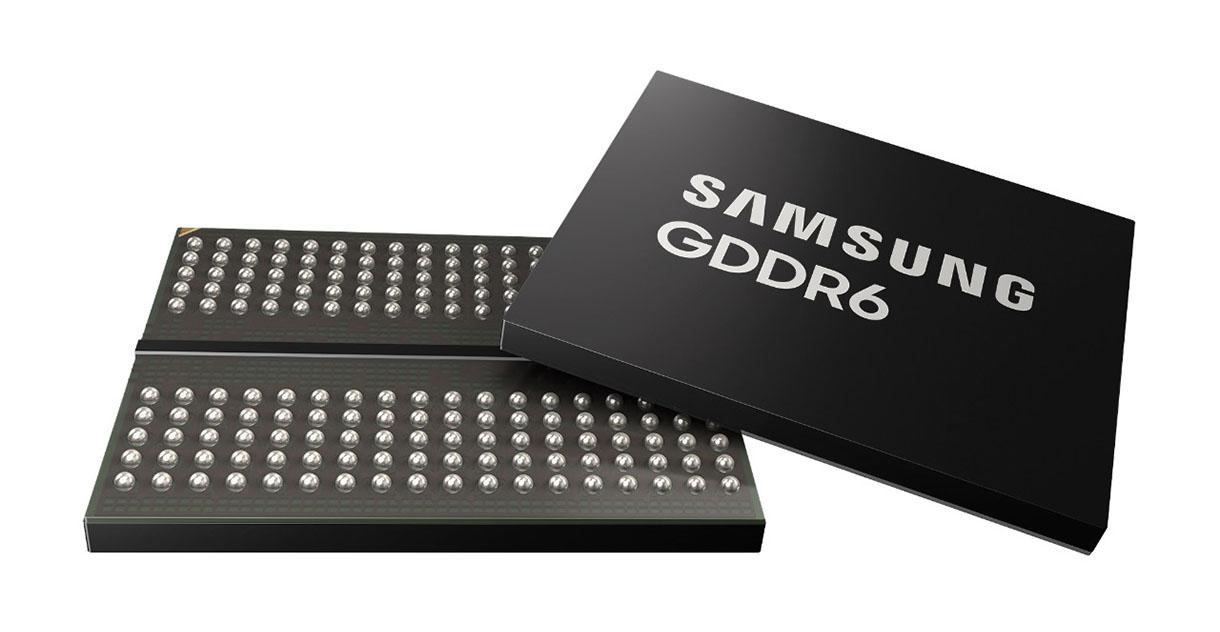Samsung has unveiled GDDR6W, its newest memory technology for high-performance graphics cards. GDDR6W is supposed to provide two times the capacity and performance of standard GDDR6 memory. It is comparable to HBM2E in raw performance, allowing a total graphics memory bandwidth of 1.4TB/s. For comparison, the powerful
GeForce RTX 4090 from Nvidia presently has a GDDR6X peak speed of 1TB/s.
The new technology, according to
Samsung, is essential for providing "
Immersive Metaverse Experiences." In the immediate term, faster graphics cards or more memory bandwidth is unlikely to be made possible by the new technology. The newest GDDR6 memory chips from Samsung, which are expected to deliver various improvements over their predecessors, have recently been released. These improvements will try to accommodate circumstances that require a lot of memory and more processing power.
Specifications & Features
According to official notes from the South Korean tech giant, the "first next-generation graphics DRAM technology" has been introduced. Providing an extra DRAM device to effectively double the capacity and bandwidth without bringing any potential adverse effects that might be encountered with the bigger form factor offers significant benefits over conventional GDDR6 memory devices.
According to Samsung, the new GDDR6W will offer all these enhancements while using the same amount of energy as the standard GDDR6. In addition, thanks to the new chips, users can use the new technology without significantly modifying their current gear. The brand calls the new technique used in the Samsung GDDR6W FOWLP, or Fan Out Wafer Level Packaging. A more compact design with finer writing patterns is made possible by the new packaging method. This enables packaging with a typical thickness reduction from 1.1mm to 0.7mm.
It's essential to remember that the 1.4 TB/s claimed for overall memory bandwidth refers to a 512-bit comprehensive memory interface with eight GDDR6W packages totaling 32GB of graphics memory. An RTX 4090 24GB card uses twelve GDDR6X packages over a 384-bit interface. GDDR6X would be slightly slower than the brand-new GDDR6W standard if the bus width remained the same.
The critical thing to note in this situation is that Samsung is directly comparing performance with GDDR6 rather than GDDR6X, probably because Micron is the only manufacturer of GDDR6X.
"With GDDR6W, we're able to nurture differentiated memory products that can suit multiple client needs - a big step towards securing our leadership in the industry," says CheolMin Park, Executive Vice - president of Strategic Planning Process for the Memory Business at Samsung Electronics. The manufacturer anticipates that the new GDDR6W memory will boost the performance of accelerators for high-speed computing and artificial intelligence. However, this will also be known on portable computing devices like laptops.
Memory Interface For PC GPUs & Starters
Memory interface width, specifically for PC GPUs, frequently varies depending on the product category. Even though modern cards have a maximum width of 384 bits, the most extensive non-HBM memory interfaces have been as massive as 512 bits. Although creating a massively parallel memory interface can lead to mega-sized bandwidth, numerous restrictions are associated with that technique.
To begin with, you require enough memory chips to fill the interface. Since most GDDR memory chips have 32-bit interfaces, 16 are required to occupy a 512-bit interface. There are many packages to fit onto a PCB, and you must route many traces through the board.
This may result in techniques like mounting components on the board's back like NVIDIA did with their top-of-the-line
GeForce RTX 3000 cards. Because the DRAM packets need to be cooled properly, that is a less-than-ideal option.

